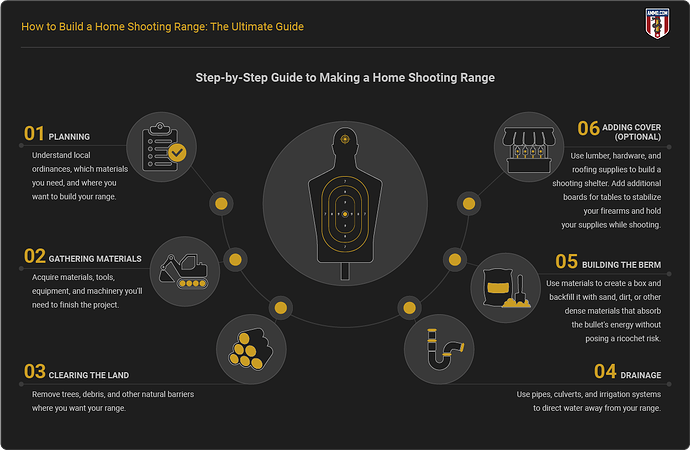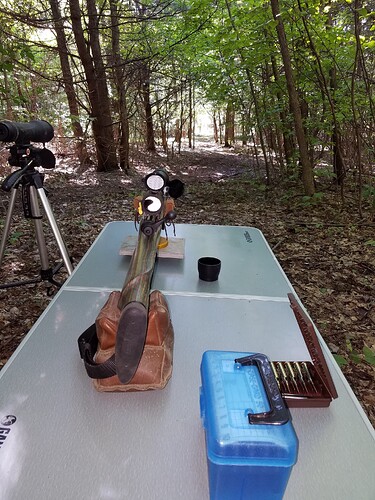There’s nothing quite like walking out of your back door and plinking in the comfort of your own property. Building a home shooting range is relatively simple, but planning and preparing before breaking ground will save you a headache.
This guide will help you design, prepare, and build your home shooting range.
Step-by-Step Guide on Making a Home Shooting Range
Making a home shooting range is a smart long-term investment. Range fees accumulate over time, and if you develop your range to last, it’s the perfect solution to training economically and efficiently.
Note: Observing safety rules, mitigating ricochet risks, and putting up signs are crucial to your home gun range’s overall success.
Here are the steps to designing and building your home shooting range:
Step 1: Planning
Careful planning is crucial to success. Skipping this critical step can turn your home shooting range vision into an unnecessary burden – and in the worst-case scenario, you may have to abandon the project altogether.
Create a checklist and work through it before investing:
- Understand local ordinances and locate buried lines, cables, and septic tanks.
- Map out your range (although a well-built berm, or an artificial embankment, that will stop bullets, ensuring no homes or structures are behind it is necessary to prevent tragedy).
- Gather cost-effective and readily available materials.
- Acquire whichever tools you’ll need to complete the job.
Step 2: Materials
The materials you’ll need depend on the location and terrain of your shooting range. After a property assessment, determine whether (A) you’ll need a berm, (B) the land needs to be cleared, and (C) you would like shooting stands (covered or uncovered).
Although a natural backstop may suffice in hilly areas, a berm is still highly recommended for safety reasons. Should you choose to forego a berm, you’ll likely need heavy equipment (e.g., a backhoe, skid steer, etc.) to level your range and possibly lumber, gravel, chainsaws, hardware, and, of course, target stands.
A flatter area requires a shooting berm (which we’ll discuss in greater detail below). You will need sand or dirt, lumber (or another dense material for the backing), and hardware.
Finally, choose your targets. Do you want target stands (which require lumber, paper targets, and a lot of staples) or steel targets (which last longer)?
The materials needed for your shooting range may vary, but here is a checklist of the most commonly used items:
Materials Checklist:
- Heavy machinery (for leveling land)
- Tools (for clearing land and building a berm and/or shooting structure)
- Pipe and/or gravel (for drainage)
- Dirt or sand (for a berm)
- Lumber (for the berm and/or shooting structure)
- “No Trespassing” signs
Step 3: Removing Barriers
Trees may seem like an acceptable backstop for your shooting range. This isn’t the safest option, however. It’s better to remove trees, brush, and any other obstacles that impede your line of sight.
After planning and gathering materials, clear the land.
Continue reading How to Build a Home Shooting Range: The Ultimate Guide on Ammo.com

